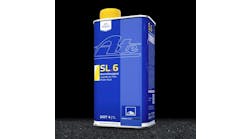After 40 years in business, Barry Steinberg found a way to increase efficiency at his Direct Tire & Auto Service location in Watertown, Mass., by 15% to 20%. His secret: video.
“This product is just sensational,” Steinberg says of the tool from Quik Video LLC. The tool allows Steinberg’s technicians to take videos of cars in the shop and show customers what repairs, if any, are needed. The technician inspects the car. Then, using an iPod, the technician presses the record button on the Quik Video app (VSS Studio in the iTunes app store) and tells and shows the customer what he found.
There’s no editing. No squeezing or compressing to make the file small enough to send. Videos can be up to four minutes long, but at Direct Tire they’re usually half that long. With the customer’s contact information already inputted into the system, the technician sends the video to the customer via e-mail and text message.
It might not sound like a revolutionary thing, but Jack Gardner, chief operating officer for Quik Video, says it’s a tool that gives customers a mini mechanical lesson, and also eliminates the fear their service tech is taking advantage of them.
“We’ve given them proof that this is what they need, and we’ve empowered them to make a decision,” says Gardner.
Video messages are color coded. Green means the car is in great shape and no work is needed. Yellow warns of a repair that will be needed down the road, like worn brakes or cracks in a control arm bushing, and a red-coded video shows a repair that needs attention now.
Shops can monitor when a customer watches a video, how much of it is viewed, if they watched it once or 10 times, and if they sent it to anyone else.
At the end customers are invited to call the shop, or they can ask the store to contact them.
Steinberg says nine out of 10 times the customer agrees to the recommended repair after viewing the video.
“In the past, 60% of the people would say ‘can I call you back?’” It’s a phrase service managers know too well, Steinberg says. They present a list of items that need attention and a total price. Often customers didn’t understand the repair. Sometimes customers needed time to digest the information, or the cost of the repair, or maybe needed to talk it over with a spouse. “What that forced us to do was put that car back together, take it out, pull the next one in, and hope they call us back the same day.”
It was typical to roll cars in and out of the shop twice, but the video is changing that. Customers are watching the video, calling back and ordering the work — with confidence, he says.
“People are just blown away by the transparency. It’s a very honest presentation of the work,” Steinberg says. “The sell rate is very high.”
Steinberg and his team log into their Quik Video dashboard. It tracks every video and customer, as well as the price of the original work order and the final invoice. If a technician determines a customer’s vehicle needs multiple repairs, but the customer only elects to do some of the work immediately, the service advisor can immediately schedule a follow-up message. That message — with the original video — can be sent a week, month or even a year later to remind the customer of the needed repairs.
Direct Tire started using the video program in October 2014, and by mid-December Steinberg said “a dozen or so” customers who had opted not to get all of the diagnosed work done originally had returned for the repairs.
“Our efficiency has increased a good 15 to 20%. It’s an improvement in efficiency, an improvement in transparency to the customer. The sale is made a lot more easily. We’re saving time on the sales side,” Steinberg says. “This is a real wow for us.”
Gardner calls that the biggest advantage. “Instead of the service advisor calling the customer and trying to sell them something, the customer is calling looking to buy something. Not only did we sell the work, but I gave the service advisor 17 minutes, 45 seconds of his time. That’s the single biggest difference at the end of the day.”
Additionally, Steinberg is watching which technicians are taking videos and monitoring how each person’s videos result in sales. He sees that competition amongst the team as a good thing to drive better business. Steinberg plans to expand Quik Video to his other three shops in the Boston area.
Direct Tire is the first tire store to use the product. So far Gardner has primarily marketed Quik Video to car dealerships. Users sign up for a minimum of a 12-month subscription and pay a monthly fee that ranges from $795 to $1,295. ■





